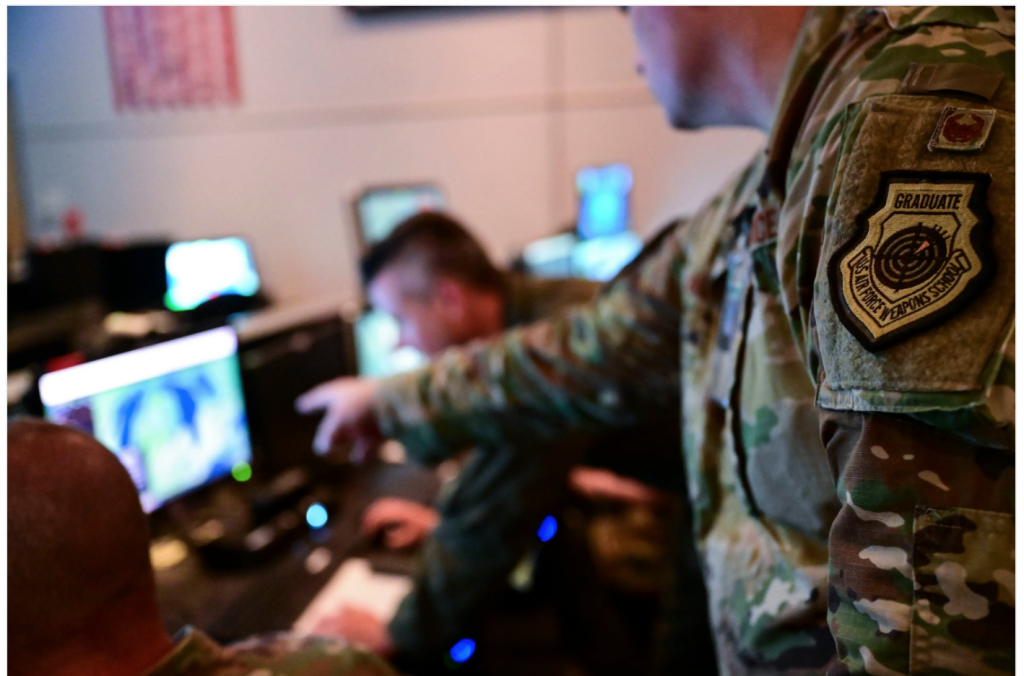
Air National Guard personnel monitor aircraft at Tyndall Air Force Base during the Global Information Dominance Experiment 3 on July 14, 2021. (Source: USAF/SSGT. Nicholas Byers)
Algorithm Gives U.S. Military New Insight into the Future of War
We civilians have long been told that our data is actually valuable. What we buy, where we go to buy it, or how often we buy things all equate to big bucks for people who go after such material for sales and repeat customers. Along with commercial companies, data gathering has also been of major interest to the military in most first-world governments. Data gives one a huge advantage in a state of conflict or all-out war.
Brett Tingley of thedrive.com has a deep piece about how the Pentagon is using AI to predict the future. And it appears the Pentagon is succeeding. Tingley revealed these details of their efforts with a new algorithm that looks at what could happen in tomorrow’s battle situations.
U.S. Northern Command (NORTHCOM) recently conducted a series of tests known as the Global Information Dominance Experiments, or GIDE, which combined global sensor networks, artificial intelligence (AI) systems, and cloud computing resources in an attempt to “achieve information dominance” and “decision-making superiority.”
According to NORTHCOM leadership, the AI and machine learning tools tested in the experiments could someday offer the Pentagon a robust “ability to see days in advance,” meaning it could predict the future with some reliability based on evaluating patterns, anomalies, and trends in massive data sets. While the concept sounds like something out ofthe film Minority Report, the commander of NORTHCOM says this capability is already enabled by tools readily available to the Pentagon.
Tapping All The Data Sources With AI
The GIDE AI algorithm the Pentagon is using is gathering real-time data from a variety of expensive toys the U.S. has long had in play around the world. By gathering submarine, satellite, radio, and media feeds along with several other sources and then asking the GIDE AI to sort and make sense of it all. Once the data is digested by the algorithm, it begins to lay out a clear picture of what the opponents are doing or are about to do. This will give the U.S. enough information to begin accurately anticipating what the other side will do and then take steps to counteract it.
To do this, the experiment used AI tools to perform real-time analysis of data gathered by a network of sensors across the globe including “commercially available information” from unnamed partners. That information, VanHerck says, could be shared via cloud-based systems to allies and other partners in real-time, should NORTHCOM decide to. The tests also included support from the Joint Artificial Intelligence Center and Project Maven, a DOD project that leverages AI to sift through massive amounts of persistent surveillance imagery and rapidly identify useful information.
The U.S. Air Force and U.S. Army have already been testing similar concepts which are exploring the convergences of real-time data collection and artificial intelligence in order to enable faster and more informed decision making. VanHerck says the GIDE 3 experiments were different, however, in that NORTHCOM isn’t looking to create new tools or concepts, but instead use what is already available to give the highest levels of military leadership a new level of awareness.
“We’re not creating new capabilities to go get data and information. This information exists from today’s satellites, today’s radar, today’s undersea capabilities, today’s cyber, today’s intel capabilities. The data exists. What we’re doing is making that data available… and shared into a cloud, where machine learning and artificial intelligence look at it and they process it really quickly and provide it to decision-makers, which I call decision superiority.”
There is a lot of information in Tingley’s article that includes several links to military papers and information. And it gives a deeper insight into a new way for the American military to stay ahead of the game in world politics and global hot spots before they become active military interventions. It’s clear that the country with the fastest or most intelligent AI will have the edge in this century.
read more at thedrive.com







Leave A Comment